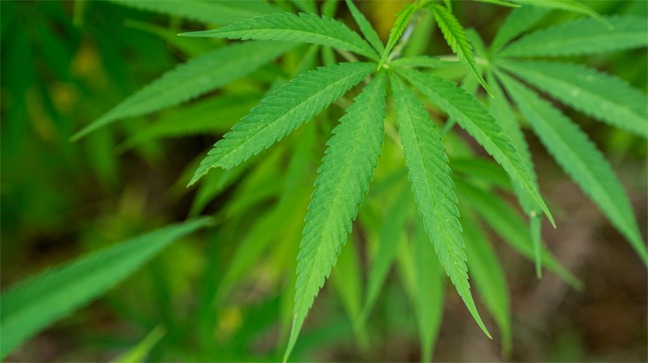As measured against US Department of Agriculture (USDA) data, the value of America’s legal cannabis crop ranks fifth nationwide, ahead of cotton at #6. Wow.
Keep in mind this is only measuring the wholesale value of cannabis on aggregate in 11 legal states where retail stores are open, against the other crops wholesale value as recorded in all states. With many states to follow suit on legality in the near future, cannabis continues to be an excellent growth opportunity for clientele.
- Only corn, soybeans, hay, and wheat return more wholesale revenue to
American farmers annually.
- Legal cannabis is the single most valuable crop in Alaska, Colorado, Massachusetts, Nevada, and Oregon.
- In each of the 11 states with adult-use retail stores operating, cannabis ranks no lower than fifth in crop value—often within two years of the first legal stores opening.
- In a surprising result, Colorado’s seven-year-old legal cannabis farming industry outproduced California (627 metric tons for Colorado vs. 514 for California).
- But that lead might not last. After years of slow growth, California’s licensed cultivation sector is finally taking off.
From our friends at Leafly….
David Downs and Bruce Barcott November 3, 2021
America has begun winding down its disastrous, century-long war on marijuana. We’re beating swords into plowshares. So what’s coming in from the fields? The answer: America’s 5th most valuable crop.
The first-ever Leafly Cannabis Harvest Report, released today, counted 13,042 cannabis farm licenses in the 11 legal states where retail stores are open. This unprecedented peek into US pot production found farmers growing 2,278 metric tons per year. It’s a mind-boggling number—enough to fill 57 Olympic-size swimming pools, or more than 11,000 dump trucks stretching more than 36 miles.
With US state cannabis prices ranging from about $500 to $3,000 per wholesale pound, you’re looking at a crop worth $6.175 billion per year. As measured against US Department of Agriculture (USDA) data, the value of America’s legal cannabis crop ranks fifth nationwide, ahead of cotton. And yet state and federal officials generally do not track it or acknowledge it.
Click here to download the ‘Leafly Cannabis Harvest Report 2021’ as a PDF
Pulling back prohibition’s curtain on cannabis
Why did we count the crop? Because cannabis is as stigmatized as it is valuable.
USDA economists track annual yields, prices, and estimated values for nearly every commercial crop grown in America. But they do not track legal cannabis due to the plant’s status as a federal Schedule I drug.
Our goal with the Leafy Harvest Report is to quantify annual cannabis production in operational adult-use states, just like the USDA’s Economic Research Service does for all non-cannabis crops. This is the first time anyone’s done this, as far as we know.
Voters, lawmakers, and industry leaders need these basic facts to make informed decisions. The Harvest Report is the third in this year’s Leafly Reports series, including the Leafly Jobs Report and Leafly Seeds of Change: Strategies to create an equitable cannabis industry.
A huge harvest, even bigger report findings
Here are a few more takeaways from the report:
- Only corn, soybeans, hay, and wheat return more wholesale revenue to
American farmers annually. - Legal cannabis is the single most valuable crop in Alaska, Colorado, Massachusetts, Nevada, and Oregon.
- In each of the 11 states with adult-use retail stores operating, cannabis ranks no lower than fifth in crop value—often within two years of the first legal stores opening.
- In a surprising result, Colorado’s seven-year-old legal cannabis farming industry outproduced California (627 metric tons for Colorado vs. 514 for California). But that lead might not last. After years of slow growth, California’s licensed cultivation sector is finally taking off.
How Leafly counted the crop
Leafly News senior editors David Downs and Bruce Barcott teamed up with Beau Whitney at Whitney Economics to aggregate annual crop data from the 11 states with active, legal adult-use cannabis sales.
We followed the USDA’s method of computing crop value by finding the average wholesale price per pound in a state, and multiplying it by the state’s amount of cannabis produced. In those 11 states, we counted crops destined for both adult-use and medical outlets.
Freelance cannabis journalists Amelia Williams (Debunking Dispensary Myths, 2020) and Zack Ruskin assisted with research and reporting.
Read our full methodology on page 15 of the report.
It’s time to treat cannabis farmers like first-class citizens
Prohibition, over-regulation and over-taxation infringe on Americans’ constitutional right to pursue happiness with regard to cannabis gardening and farming.
The federal government must legalize cannabis for adults, and grandfather in legacy cannabis farmers by establishing low fees and easy licensing procedures.
The Leafly Cannabis Harvest Report summarizes the discrimination cannabis farmers face at both the federal and state levels—years of review and millions of dollars in extra expenditures—just to put seeds in the soil.
Additionally, this $6 billion agricultural sector is under-banked and under-insured. Most farmers have to pay taxes in cash. Thirty-eight state attorneys general have called on Congress to pass the SAFE Banking Act, which would increase public safety and tax compliance. Reform measures like the SAFE Banking Act, and especially the MORE Act (which would legalize federally) are long overdue.
Cannabis agriculture predates our country’s union. And a more perfect union would acknowledge and respect the power of this plant.
Join the Conversation on Linkedin | About PEO Compass
The PEO Compass is a friendly convergence of professionals and friends in the PEO industry sharing insights, ideas and intelligence to make us all better.
All writers specialize in PEO business services such as Workers Compensation, Mergers & Acquisitions, Data Management, Employment Practices Liability (EPLI), Cyber Liability Insurance, Health Insurance, Occupational Accident Insurance, Business Insurance, Client Company, Casualty Insurance, Disability Insurance and more.
To contact a PEO expert, please visit Libertate Insurance Services, LLC and RiskMD.
